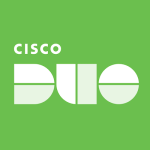I use the solution in my company for our clients so that they can connect to their data center or SharePoint devices. Whatever servers are put into the DMZ cannot be directly accessed in our company's environment by anyone, so we need to give such people a readily available account, which should be on the VPN, following which the certificate should be generated, and then they can then log in to our environment.
The security of the product has certain shortcomings, making it an area where improvements are required.
I have been using Cisco AnyConnect Secure Mobility Client for seven to eight years.
Considering the VPN part of the tool, I rate the product's stability as eight out of ten.
Scalability-wise, I rate the solution an eight out of ten.
If Cisco AnyConnect Secure Mobility Client was the best in terms of scalability, then I don't know why there are other solutions with similar offerings in the market. There are pros and cons attached to every solution.
In my company's environment, there are around 3,000 people using VPN connections.
The product is regularly used in my company.
For the last three years, I have not opened any tickets with the product's support. I just deploy the tool, take care of the architecture and do the installation of the devices. Once the setup has been done, I am moved to another project. I don't work in operations.
The product's setup phase depends on the kind of use cases for which a person wants to use it. In general, the setup process is not very critical, but you need to create a VPN rule so that you know who can access the tool and what the limitations are, after which the potential users of the product can get access to it.
For the product's deployment phase, users need to be created for a steady account, and then ensure that the VPN gets created, after which the company needs to give certain permissions to the users, following which we need to share with them the URLs and everything.
The solution is deployed on an on-premises model.
I need two to four staff members in my company to handle the deployment and maintenance phases.
The value derived from the use of the product stems from the fact that the setup phase is easy. When you connect with Cisco AnyConnect Secure Mobility Client, you get to know how your VPNs are connected in your environment. If there are any failures in the VPNs, the tool provides a clear message stating why it failed. The tool is user-friendly, robust and easy to use in any environment.
My company has a three-year or a four-year license. In scenarios attached to a solution where the product may be reaching an end-of-support or end-of-life phase, Cisco provides OS support in such environments. If you are in a scenario where the product has reached the end-of-life phase, Cisco should be paid some extra money in addition to the standard licensing fees.
The product improves my company's remote work security because it has lots of security options. We have all the logs of what others are accessing while also having details like where they are accessing, which IP addresses they are using, and from which country they are operating, so we know everything about the users.
The product supports MFA during the tool's deployment in our company. My company has an OTP-based MFA.
I like the support that the tool provides for the devices, which are meant for routing and switching purposes mostly. The tool is very pretty good when it comes to the security part. The tool is truly into the network and security parts.
The VPN capabilities of the product have enhanced certain capabilities in our company since it allows us to track everything related to the outside world. Anyone from the outside cannot directly access our company's environment. The VPN capabilities of the product ensure that there are fewer chances of attacks on our environment.
The network visibility provided by Cisco AnyConnect Secure Mobility Client is good. Ultimately, the tool's algorithms for the network, along with the calculation part, are good. Cisco's products and support are good. The tool is user-friendly enough for people to understand it very well.
The product generally offers good support to its users. If anyone gets stuck with the product, then they can use Google to find the solution to the issue and use some of the information for survival purposes in a particular environment. If you just Google about Cisco devices, you can get a lot of information. The product is also easy to implement.
Speaking about how I assess the impact of Cisco on your company's network performance, I would say that the product provides us with details, and the time when we click on the client or the application of the solution that is installed in our environment, it gives details in its logs like how much GB of data is being downloaded and where all the company's systems are connected along with the connection area. Even the details of the IP with which the company's systems are connected are given in the solution.
I rate the tool an eight out of ten.





















